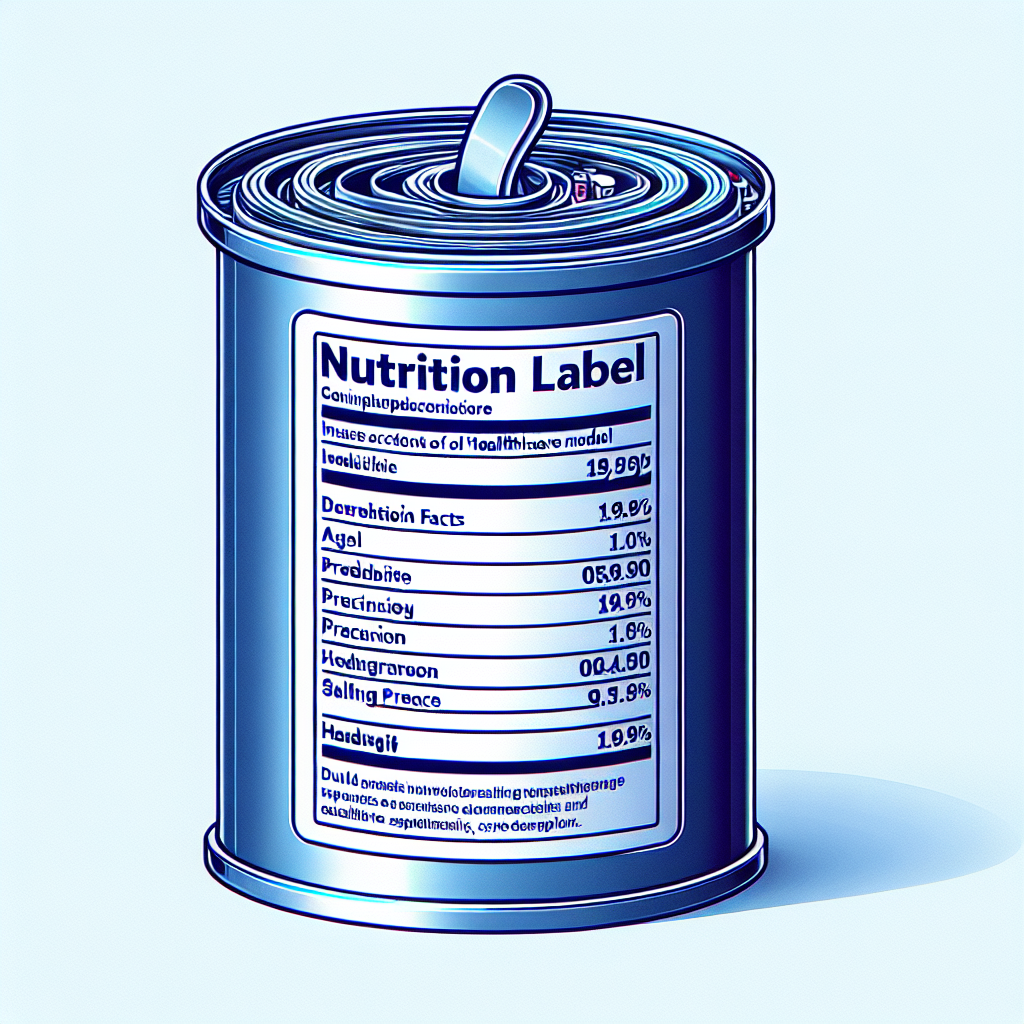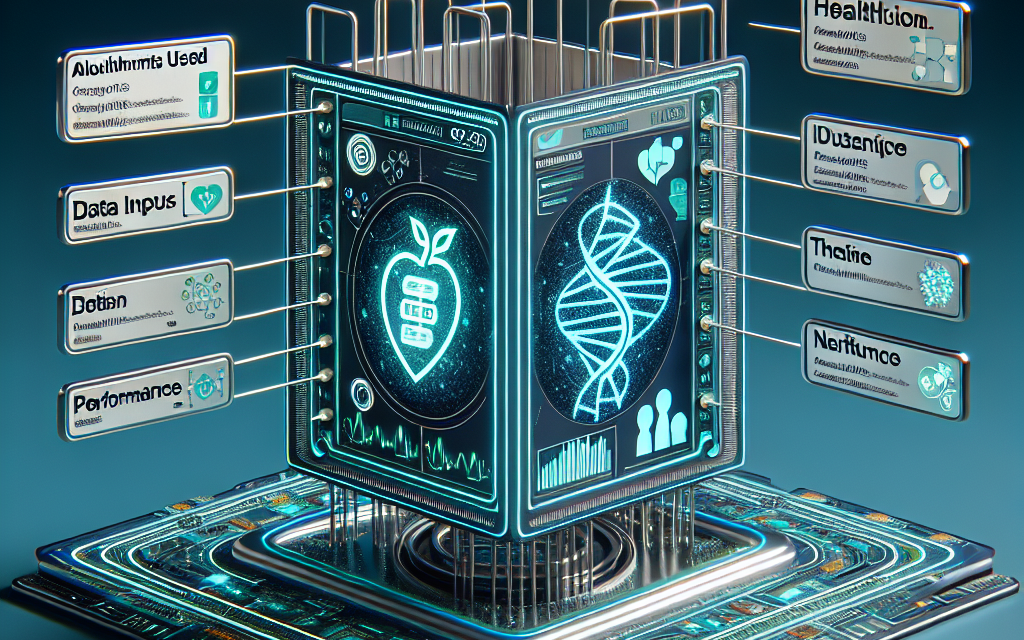CHAI: Expect ‘Nutrition Labels’ for Healthcare AI Models Soon

In the rapidly evolving landscape of healthcare, artificial intelligence (AI) is playing an increasingly pivotal role. From diagnostics to treatment planning, AI models are transforming the way healthcare is delivered. However, with this transformation comes the need for transparency and accountability. Enter the concept of ‘nutrition labels’ for healthcare AI models, a novel approach aimed at providing clear, concise, and comprehensive information about AI systems. This article delves into the significance of these labels, their potential impact on healthcare, and the challenges and opportunities they present.
The Rise of AI in Healthcare
Artificial intelligence has been making waves in various sectors, and healthcare is no exception. The integration of AI into healthcare systems promises to enhance efficiency, accuracy, and accessibility. From predictive analytics to personalized medicine, AI is reshaping the healthcare landscape.
One of the most significant contributions of AI in healthcare is its ability to process vast amounts of data quickly and accurately. This capability is particularly beneficial in areas such as radiology, where AI models can analyze medical images faster and, in some cases, more accurately than human radiologists. For instance, a study published in the journal The Lancet Digital Health found that AI algorithms could detect breast cancer in mammograms with a higher degree of accuracy than human experts.
Moreover, AI is being used to develop predictive models that can forecast patient outcomes, identify potential health risks, and suggest personalized treatment plans. These models leverage data from electronic health records (EHRs), genetic information, and even wearable devices to provide insights that were previously unattainable.
Despite these advancements, the integration of AI in healthcare is not without its challenges. Concerns about data privacy, algorithmic bias, and the lack of transparency in AI decision-making processes have been raised by both healthcare professionals and patients. This is where the concept of ‘nutrition labels’ for AI models comes into play.
Understanding ‘Nutrition Labels’ for AI Models
The idea of ‘nutrition labels’ for AI models is inspired by the nutritional information labels found on food products. Just as these labels provide consumers with essential information about the contents and nutritional value of food items, AI nutrition labels aim to offer users a clear understanding of an AI model’s functionality, performance, and limitations.
These labels are designed to address several key aspects of AI models:
- Transparency: Providing detailed information about how the AI model works, including the data it was trained on and the algorithms it uses.
- Performance: Offering metrics that indicate the model’s accuracy, reliability, and potential biases.
- Limitations: Highlighting the scenarios in which the model may not perform well or could produce misleading results.
- Accountability: Identifying the developers and organizations responsible for the model, as well as any regulatory approvals it has received.
- Usability: Offering guidance on how to interpret the model’s outputs and integrate them into clinical workflows.
By providing this information, AI nutrition labels aim to empower healthcare professionals and patients to make informed decisions about the use of AI in clinical settings. They also serve to build trust in AI systems by promoting transparency and accountability.
The Impact of AI Nutrition Labels on Healthcare
The introduction of nutrition labels for AI models has the potential to significantly impact the healthcare industry. By enhancing transparency and accountability, these labels can help address some of the key challenges associated with AI adoption in healthcare.
One of the primary benefits of AI nutrition labels is their ability to improve trust in AI systems. Trust is a critical factor in the adoption of new technologies, particularly in healthcare, where the stakes are high. By providing clear and comprehensive information about AI models, nutrition labels can help build confidence among healthcare professionals and patients.
Furthermore, AI nutrition labels can facilitate better decision-making by providing healthcare professionals with the information they need to assess the suitability of an AI model for a particular clinical application. This can lead to more effective and efficient use of AI in healthcare, ultimately improving patient outcomes.
In addition to these benefits, AI nutrition labels can also promote innovation in the development of AI models. By setting clear standards for transparency and accountability, these labels can encourage developers to create more robust and reliable AI systems. This, in turn, can drive advancements in AI technology and its applications in healthcare.
However, the implementation of AI nutrition labels is not without its challenges. Developing standardized labels that can be applied across different types of AI models and healthcare applications is a complex task. Additionally, there is a need for collaboration between various stakeholders, including AI developers, healthcare providers, regulators, and patients, to ensure that the labels are effective and meaningful.
Challenges in Implementing AI Nutrition Labels
While the concept of AI nutrition labels holds great promise, there are several challenges that need to be addressed to ensure their successful implementation. These challenges span technical, regulatory, and ethical domains.
Technical Challenges: One of the primary technical challenges is the development of standardized metrics and frameworks for AI nutrition labels. Given the diversity of AI models and their applications in healthcare, creating a one-size-fits-all label is not feasible. Instead, there is a need for flexible frameworks that can be adapted to different types of AI systems while maintaining consistency and comparability.
Another technical challenge is ensuring the accuracy and reliability of the information provided in the labels. This requires robust validation and testing processes to verify the performance and limitations of AI models. Additionally, there is a need for ongoing monitoring and updates to the labels as AI models evolve and new data becomes available.
Regulatory Challenges: The implementation of AI nutrition labels also raises regulatory challenges. Currently, there is a lack of clear guidelines and standards for the development and use of AI in healthcare. This creates uncertainty for both developers and healthcare providers, making it difficult to establish consistent labeling practices.
To address this challenge, regulatory bodies need to develop clear and comprehensive guidelines for AI nutrition labels. This includes defining the key elements that should be included in the labels, as well as establishing processes for their validation and approval. Collaboration between regulators, industry stakeholders, and healthcare professionals is essential to ensure that these guidelines are practical and effective.
Ethical Challenges: Ethical considerations are also a critical aspect of implementing AI nutrition labels. Ensuring that the labels are transparent and unbiased is essential to prevent potential harm to patients and healthcare providers. This requires careful consideration of issues such as algorithmic bias, data privacy, and informed consent.
Addressing these ethical challenges requires a multidisciplinary approach that involves input from ethicists, legal experts, and patient advocacy groups. By incorporating diverse perspectives, it is possible to develop AI nutrition labels that are not only informative but also ethical and equitable.
Opportunities for Innovation and Collaboration
Despite the challenges, the development and implementation of AI nutrition labels present significant opportunities for innovation and collaboration in the healthcare sector. By fostering transparency and accountability, these labels can drive advancements in AI technology and its applications in healthcare.
One of the key opportunities is the potential for collaboration between AI developers, healthcare providers, and regulatory bodies. By working together, these stakeholders can develop standardized frameworks and guidelines for AI nutrition labels that are both practical and effective. This collaboration can also facilitate the sharing of best practices and lessons learned, leading to continuous improvement in the development and use of AI in healthcare.
Moreover, AI nutrition labels can serve as a catalyst for innovation in AI technology. By setting clear standards for transparency and accountability, these labels can encourage developers to create more robust and reliable AI systems. This can lead to the development of new AI models and applications that address unmet needs in healthcare and improve patient outcomes.
In addition to these opportunities, AI nutrition labels can also promote patient engagement and empowerment. By providing clear and comprehensive information about AI models, these labels can help patients make informed decisions about their healthcare. This can lead to increased patient satisfaction and trust in AI systems, ultimately improving the overall quality of care.
Overall, the development and implementation of AI nutrition labels represent a significant step forward in the integration of AI into healthcare. By addressing the challenges and leveraging the opportunities, it is possible to create a more transparent, accountable, and innovative healthcare system that benefits both patients and providers.
Conclusion: The Future of AI Nutrition Labels in Healthcare
As AI continues to transform the healthcare landscape, the need for transparency and accountability becomes increasingly important. AI nutrition labels offer a promising solution to address these needs by providing clear and comprehensive information about AI models. By enhancing trust, facilitating better decision-making, and promoting innovation, these labels have the potential to significantly impact the healthcare industry.
However, the successful implementation of AI nutrition labels requires collaboration between various stakeholders, including AI developers, healthcare providers, regulators, and patients. By working together, it is possible to develop standardized frameworks and guidelines that ensure the effectiveness and meaningfulness of these labels.
As we move forward, it is essential to continue exploring the challenges and opportunities associated with AI nutrition labels. By addressing these issues and leveraging the potential of AI technology, we can create a more transparent, accountable, and innovative healthcare system that benefits all stakeholders.
In conclusion, the introduction of AI nutrition labels represents a significant step towards a more transparent and accountable healthcare system. By providing clear and comprehensive information about AI models, these labels can help build trust, facilitate better decision-making, and promote innovation in healthcare. As we continue to explore the potential of AI in healthcare, it is essential to prioritize transparency and accountability to ensure that these technologies are used ethically and effectively.





